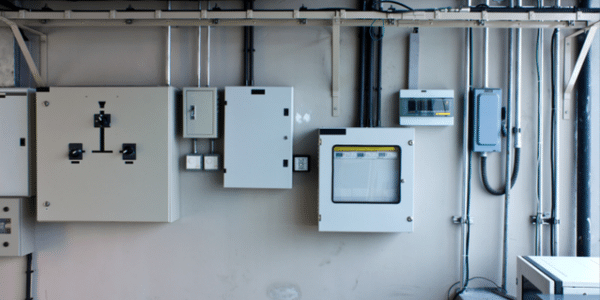Exploring the Role of Electrical Fiberglass Boxes in Telecommunications Infrastructure
6/21/20244 min read


Introduction to Electrical Fiberglass Boxes
Electrical fiberglass boxes are specialized enclosures designed to house and protect electrical components and wiring. These boxes are constructed from fiberglass-reinforced plastic, a composite material made by embedding fine fibers of glass in a resin matrix. This combination results in a material that offers a unique set of properties—strength, durability, and resistance to environmental factors such as moisture, chemical exposure, and temperature fluctuations.
Fiberglass is chosen over other materials like metal or plastic for several compelling reasons. Unlike metal, fiberglass does not corrode, which makes it ideal for use in outdoor and harsh environments. It also provides excellent insulation properties, reducing the risk of electrical shock. Compared to plastic, fiberglass offers superior mechanical strength and durability, making it less likely to crack or degrade over time. These attributes make fiberglass an optimal material for electrical enclosures, ensuring the safety and longevity of the components housed within.
In various industries, electrical fiberglass boxes play a crucial role. Their applications range from industrial automation systems to renewable energy installations. However, their significance is particularly pronounced in the telecommunications sector. In telecommunications infrastructure, these boxes are used to protect and manage critical components such as fiber optic cables, network switches, and power supplies. They provide a secure environment that safeguards sensitive equipment from physical damage, weather conditions, and electromagnetic interference.
Overall, electrical fiberglass boxes are indispensable in creating a reliable and efficient telecommunications network. Their robust construction, combined with their ability to withstand challenging environmental conditions, ensures that the infrastructure remains operational and secure. By understanding the fundamental properties and applications of electrical fiberglass boxes, one can appreciate their vital role in supporting modern telecommunications systems.
Advantages of Using Fiberglass Boxes in Telecommunications
Fiberglass boxes have emerged as a cornerstone in the telecommunications industry due to their myriad advantages. One of the most significant benefits is their exceptional durability and resilience against environmental factors. Fiberglass is inherently resistant to moisture, which makes these boxes ideal for outdoor and underground installations where exposure to water is a common risk. Moreover, the material's resistance to corrosion ensures that the boxes remain intact and functional over extended periods, even in harsh conditions.
Another notable advantage is fiberglass's resistance to UV radiation. Prolonged exposure to sunlight can degrade many materials, but fiberglass maintains its structural integrity and appearance, thereby offering extended service life and reliability for telecommunications infrastructure. This attribute is particularly vital for installations in regions with high sun exposure.
Electrical insulating properties are another critical factor that makes fiberglass boxes a safer choice for housing telecommunications equipment. Fiberglass is a non-conductive material, which significantly reduces the risk of electrical hazards. This makes it an optimal material for enclosing sensitive equipment, ensuring both operational safety and reliability.
Additionally, the lightweight nature of fiberglass cannot be overstated. Fiberglass boxes are considerably lighter than their metal counterparts, facilitating easier handling during installation. This ease of installation translates to reduced labor costs and shorter project timelines. Furthermore, the reduced weight significantly cuts down on transportation expenses, making fiberglass a cost-effective solution for large-scale telecommunications projects.
To illustrate these advantages, consider the case study of a telecommunications company that transitioned from traditional metal enclosures to fiberglass boxes for their outdoor installations. The company reported a marked decrease in maintenance costs due to the enhanced durability and corrosion resistance of fiberglass. Moreover, the improved safety profile and ease of installation enabled them to deploy new infrastructure more rapidly and efficiently, ultimately enhancing their service delivery and customer satisfaction.
Future Trends and Innovations in Electrical Fiberglass Boxes
As telecommunications infrastructure continues to evolve, so too does the technology and materials used in electrical fiberglass boxes. One of the most significant emerging trends is the development of smart and modular designs. These innovations aim to streamline the process of upgrading and maintaining telecommunications equipment. Smart designs incorporate sensors and monitoring systems that provide real-time data on the condition and performance of the boxes. Modular designs, on the other hand, offer the flexibility to easily integrate new components, making it simpler to adapt to advancements in telecommunications technology.
Advancements in materials science are likewise driving the evolution of electrical fiberglass boxes. Cutting-edge research is yielding new fiberglass composites that are not only more robust but also lighter and more adaptable. These next-generation materials are designed to withstand the rigorous demands of modern telecommunications infrastructure, including the deployment of 5G networks and the Internet of Things (IoT). Enhanced durability and resistance to environmental factors mean these boxes can offer longer service life and reduced maintenance costs, making them a cost-effective solution for infrastructure projects.
Environmental considerations are becoming increasingly important in the design and manufacture of electrical fiberglass boxes. The development of eco-friendly fiberglass composites is a notable trend. These materials are formulated to minimize environmental impact throughout their lifecycle, from production to disposal. Recycling initiatives are also gaining traction, with efforts focused on creating a closed-loop system where old and damaged fiberglass boxes can be repurposed into new products. This approach not only reduces waste but also conserves resources, aligning with global sustainability goals.
Overall, the future of electrical fiberglass boxes in telecommunications looks promising. With innovations in smart and modular designs, advancements in materials science, and a growing emphasis on environmental sustainability, these essential components are well-positioned to meet the evolving demands of modern telecommunications infrastructure. As the industry progresses, electrical fiberglass boxes will continue to play a crucial role in ensuring reliable and efficient communication networks.
